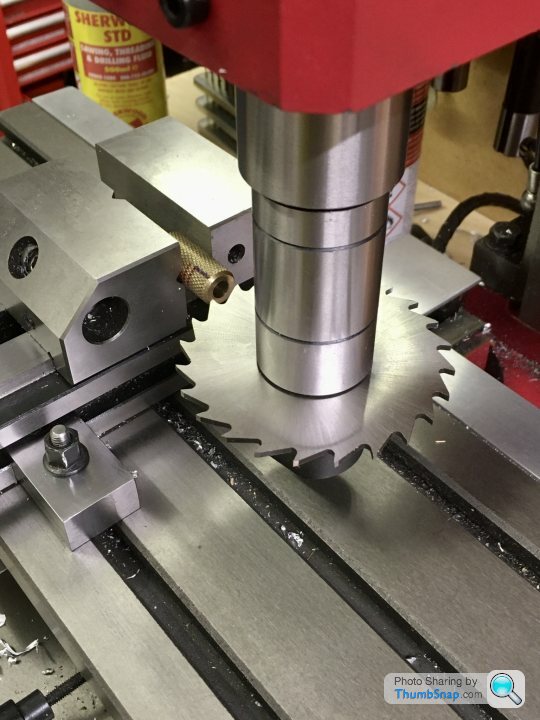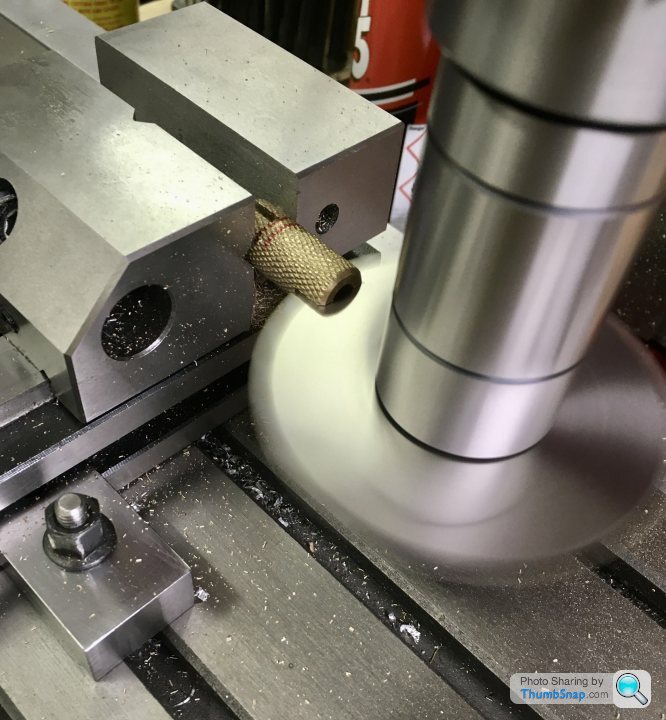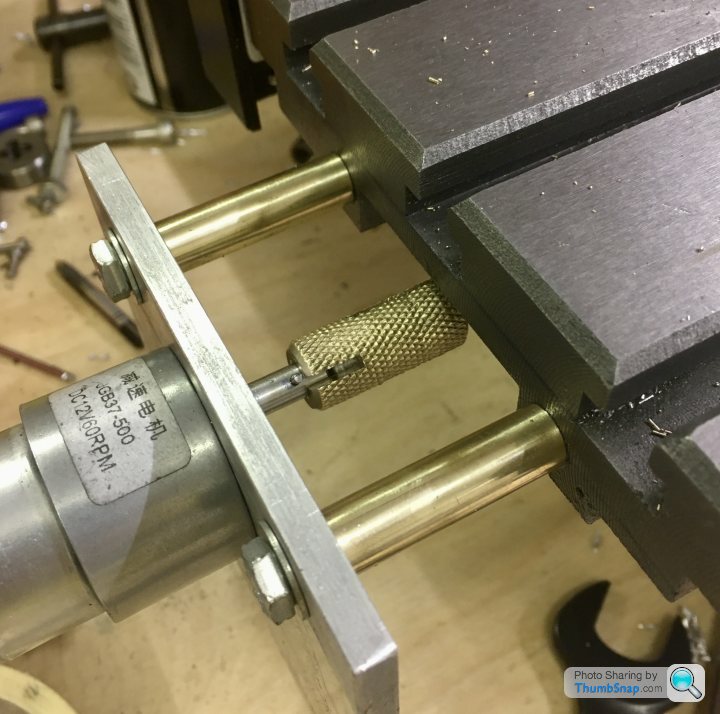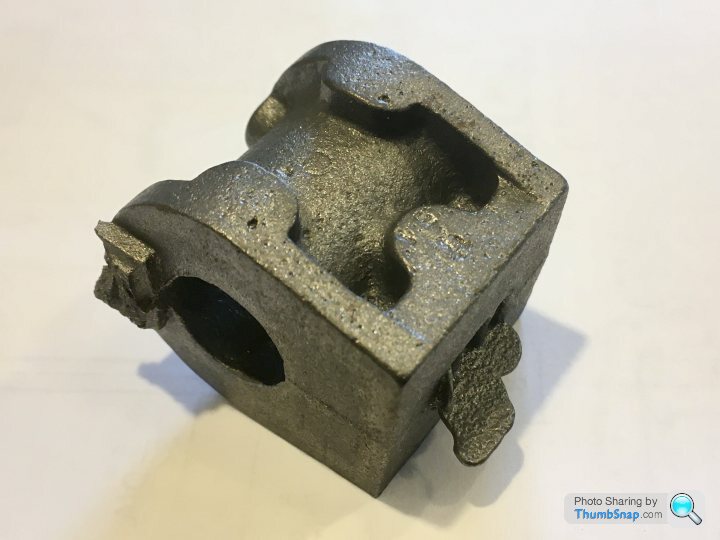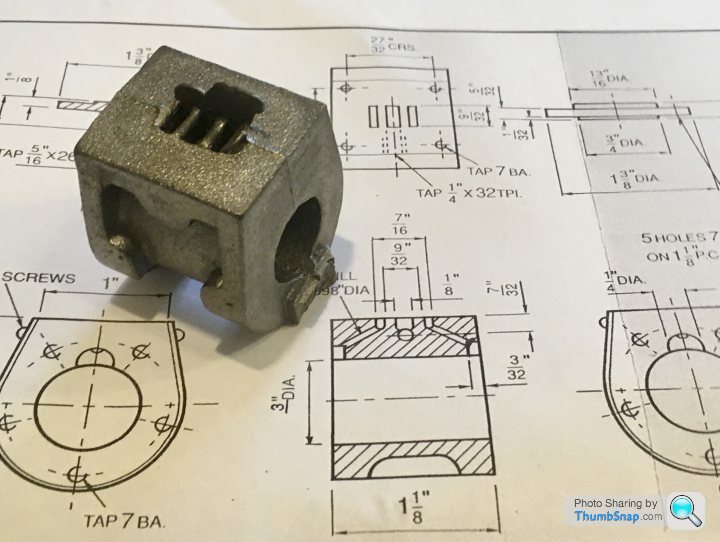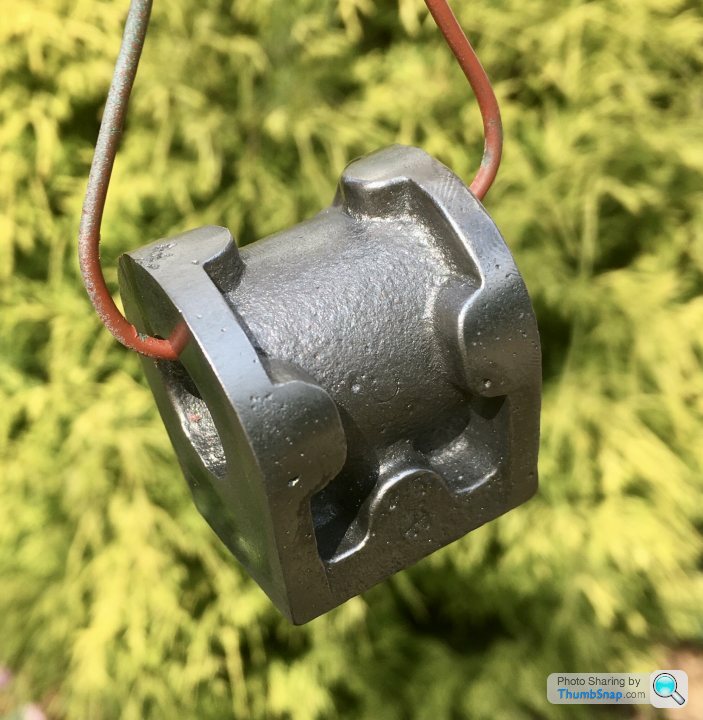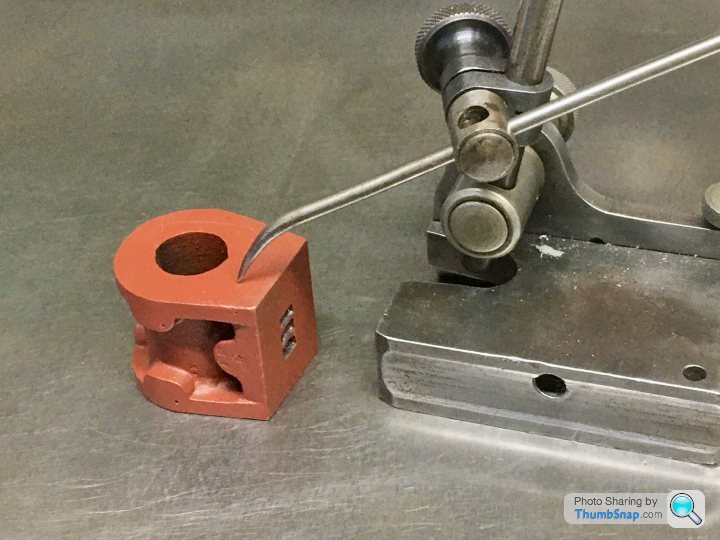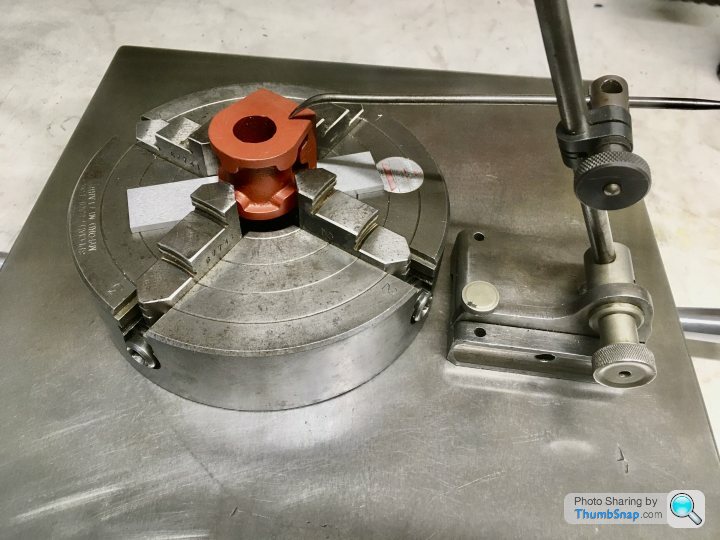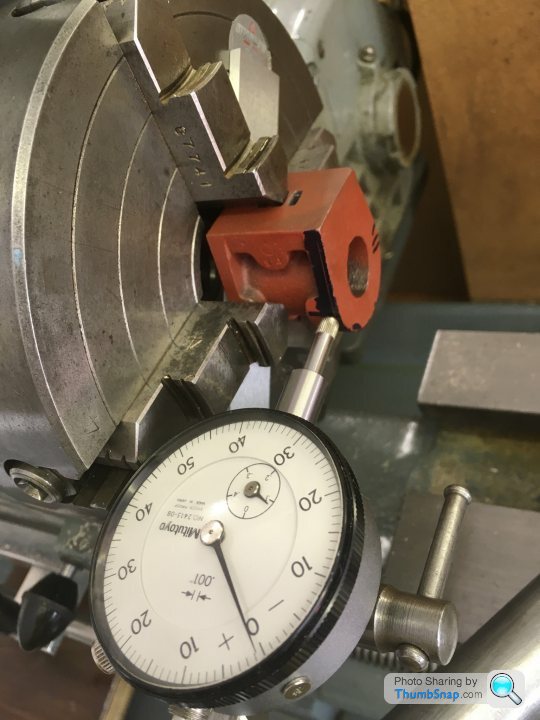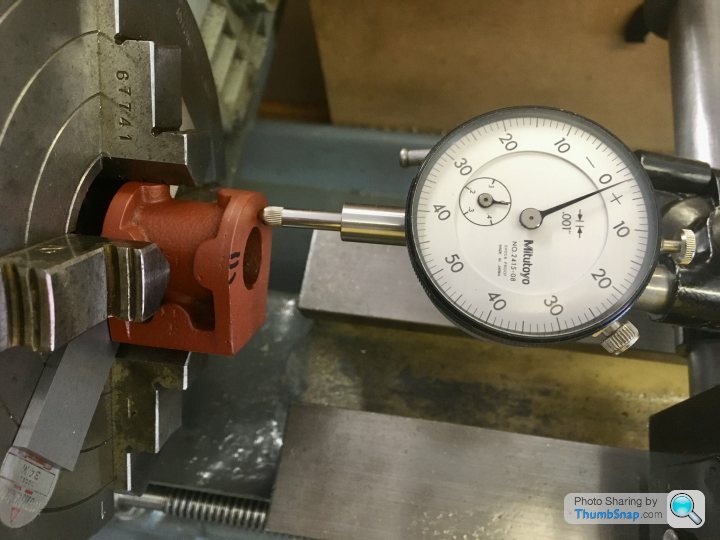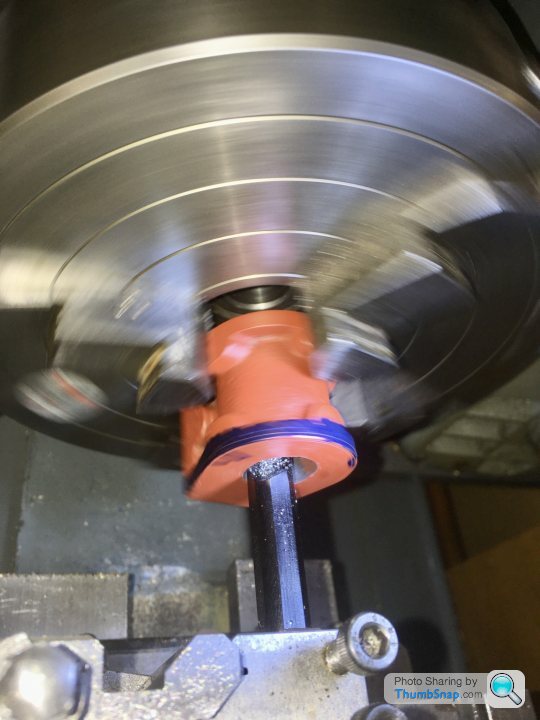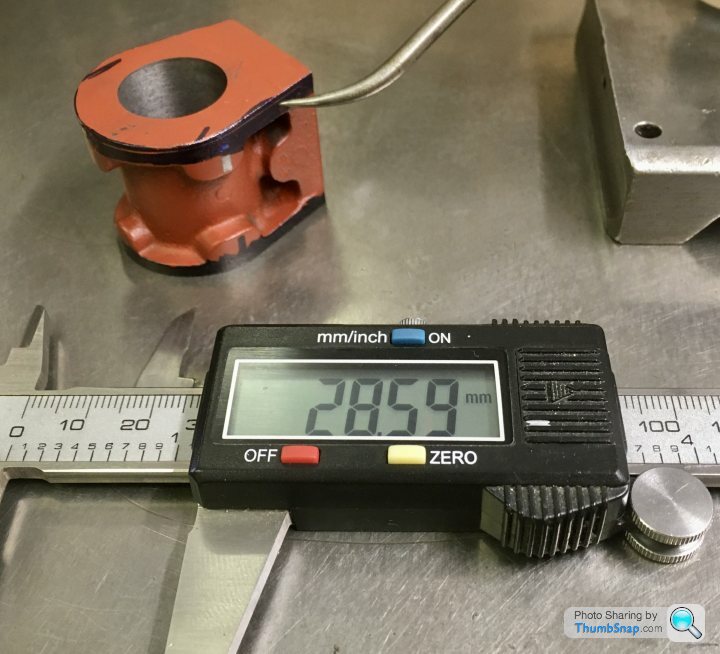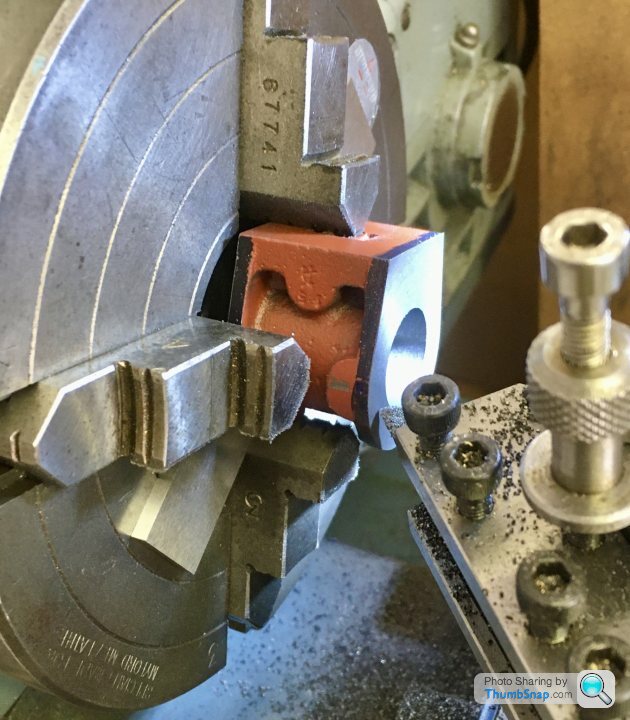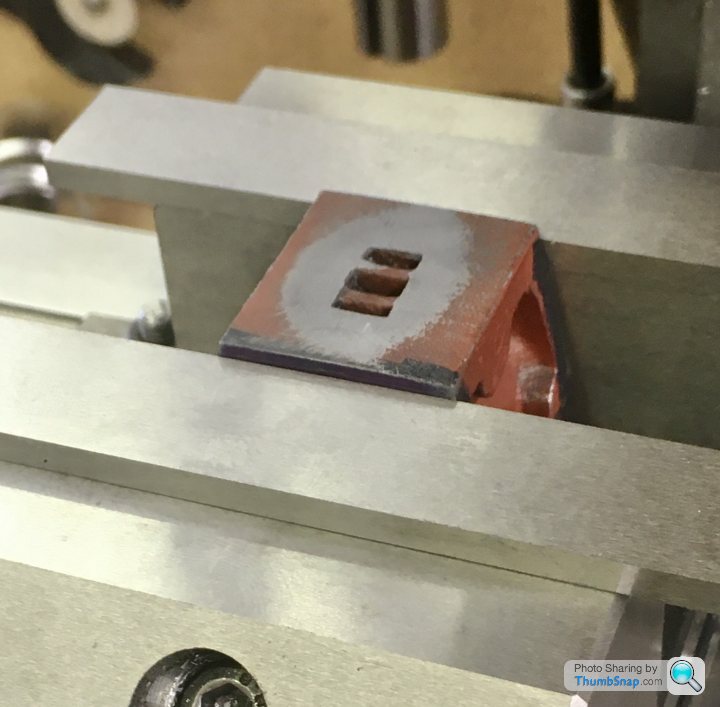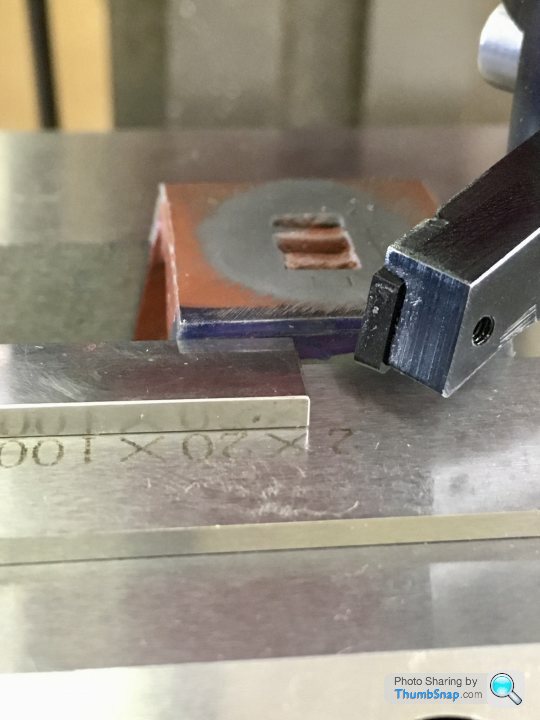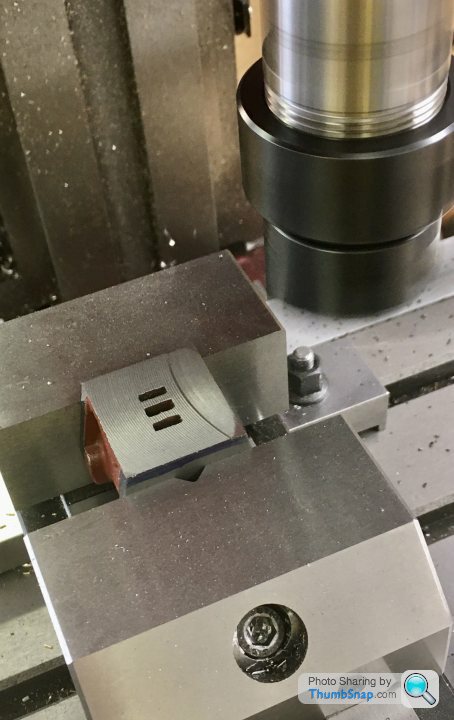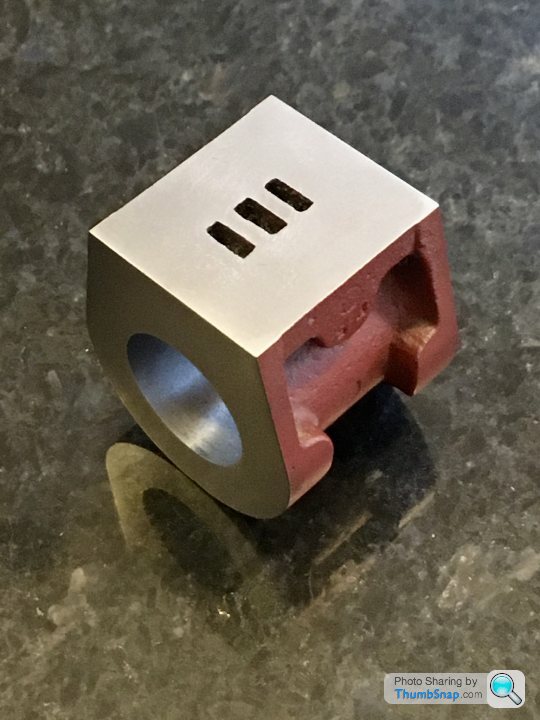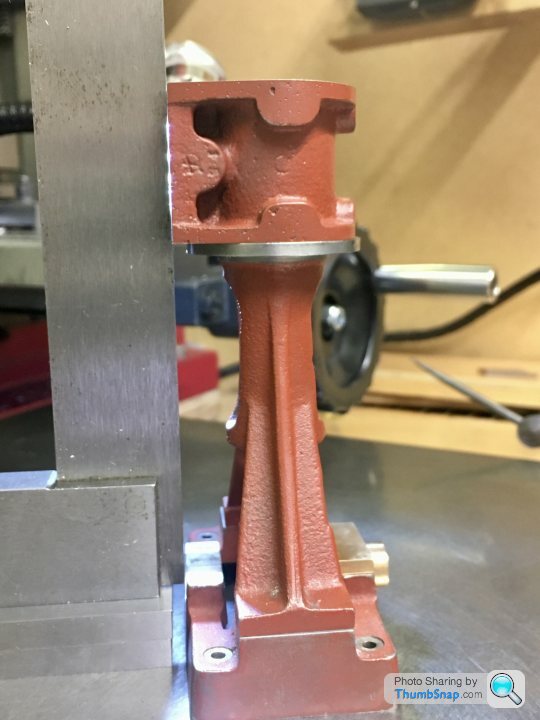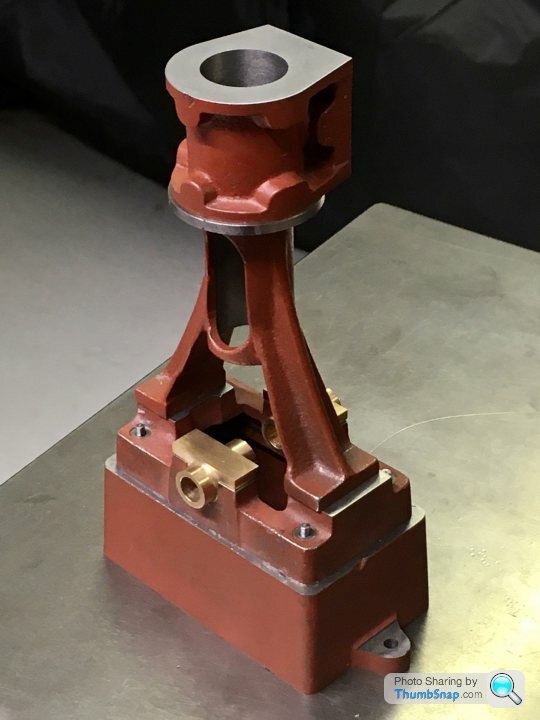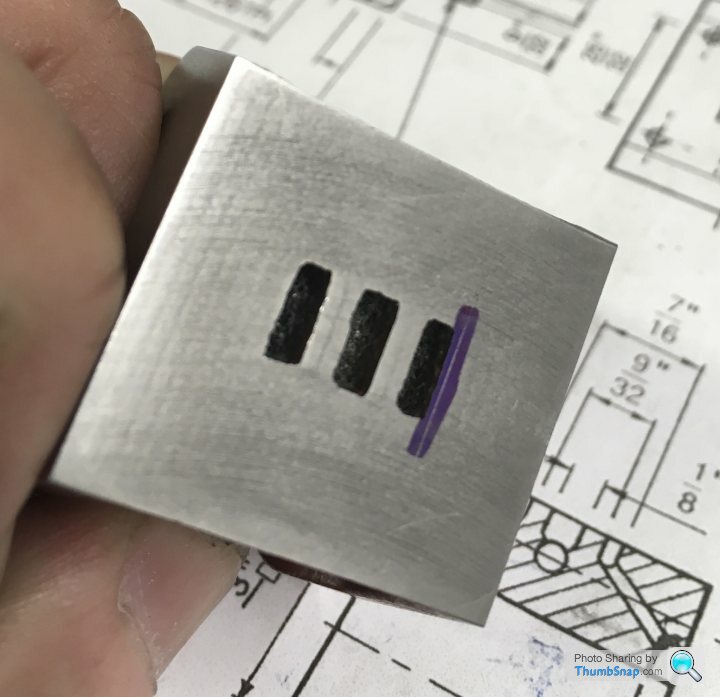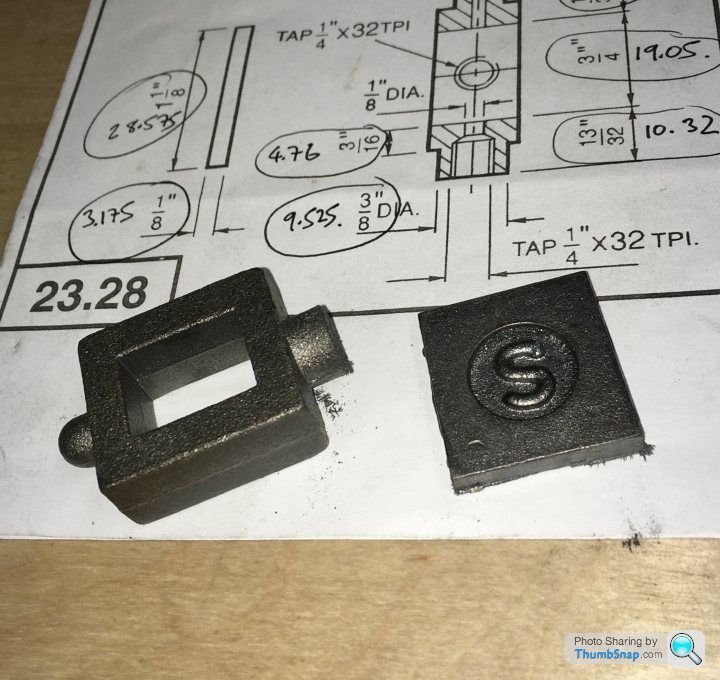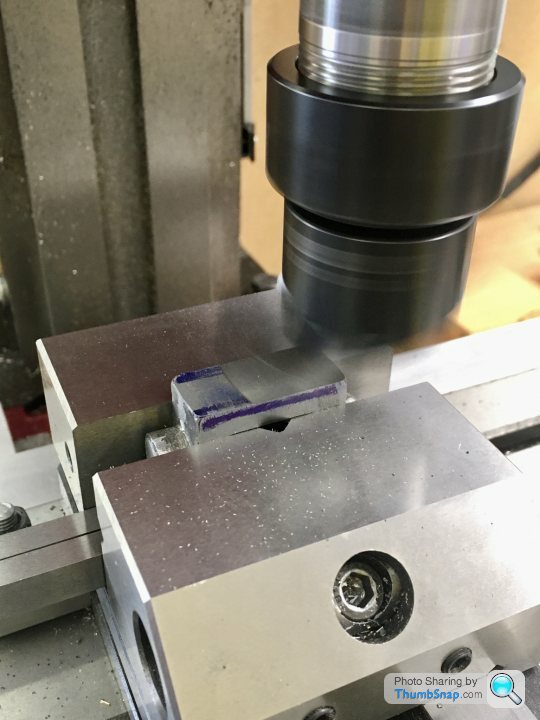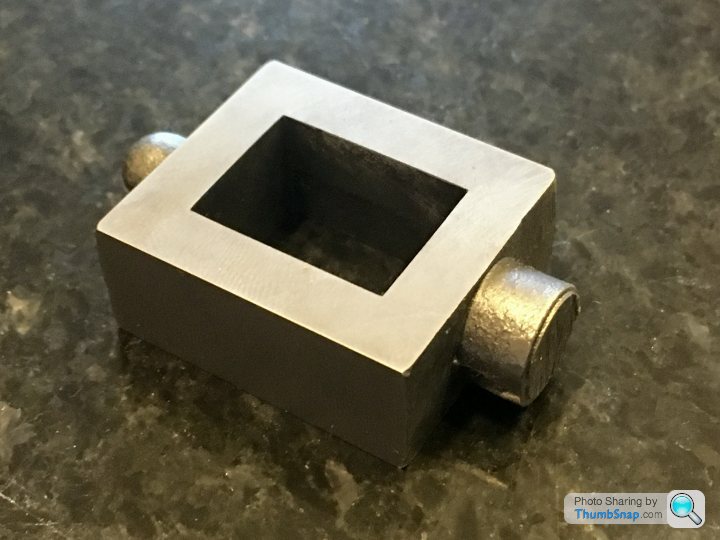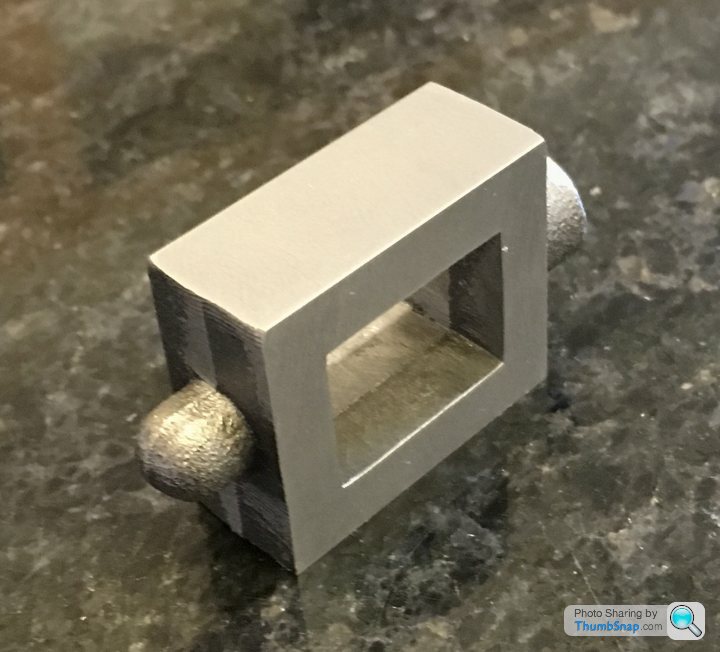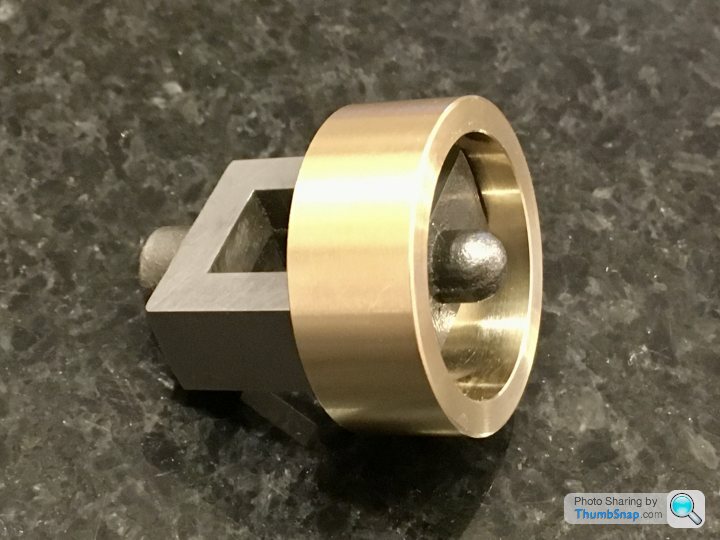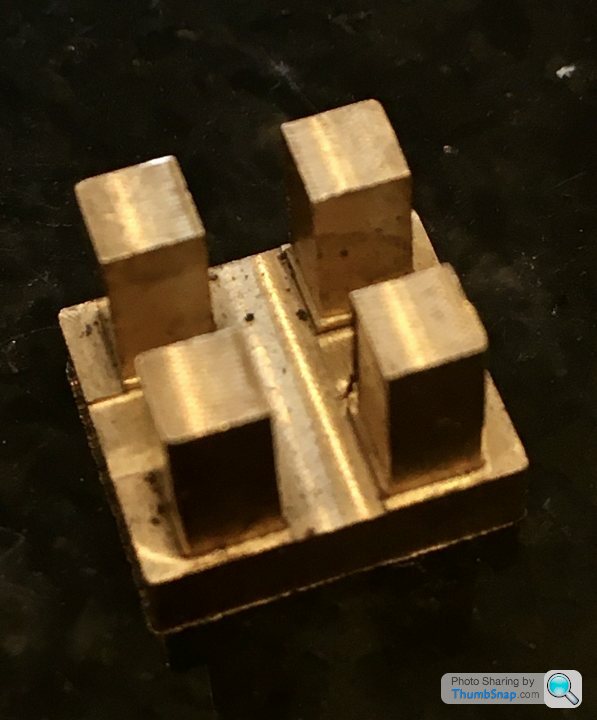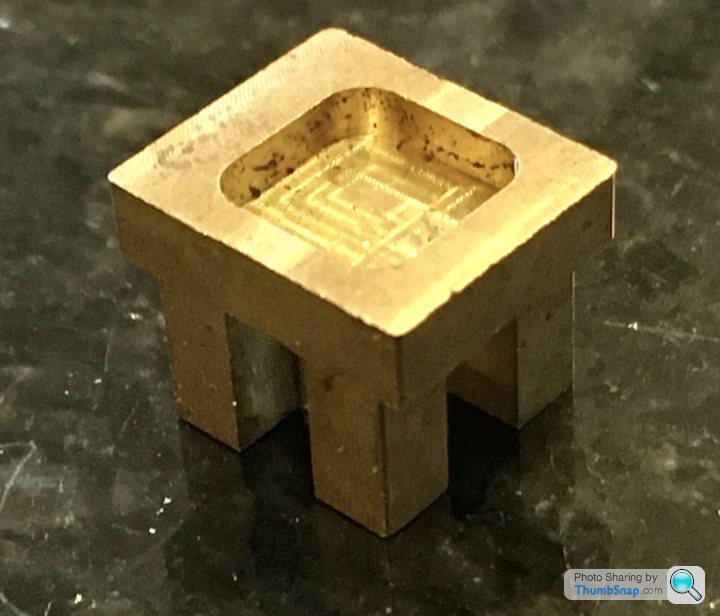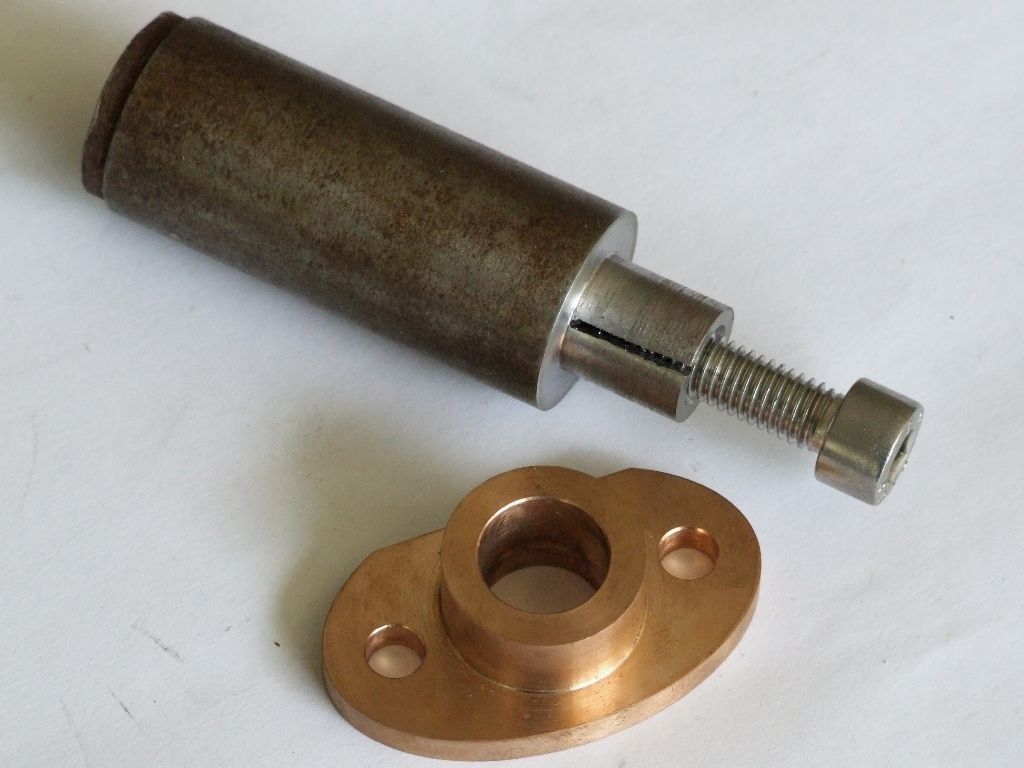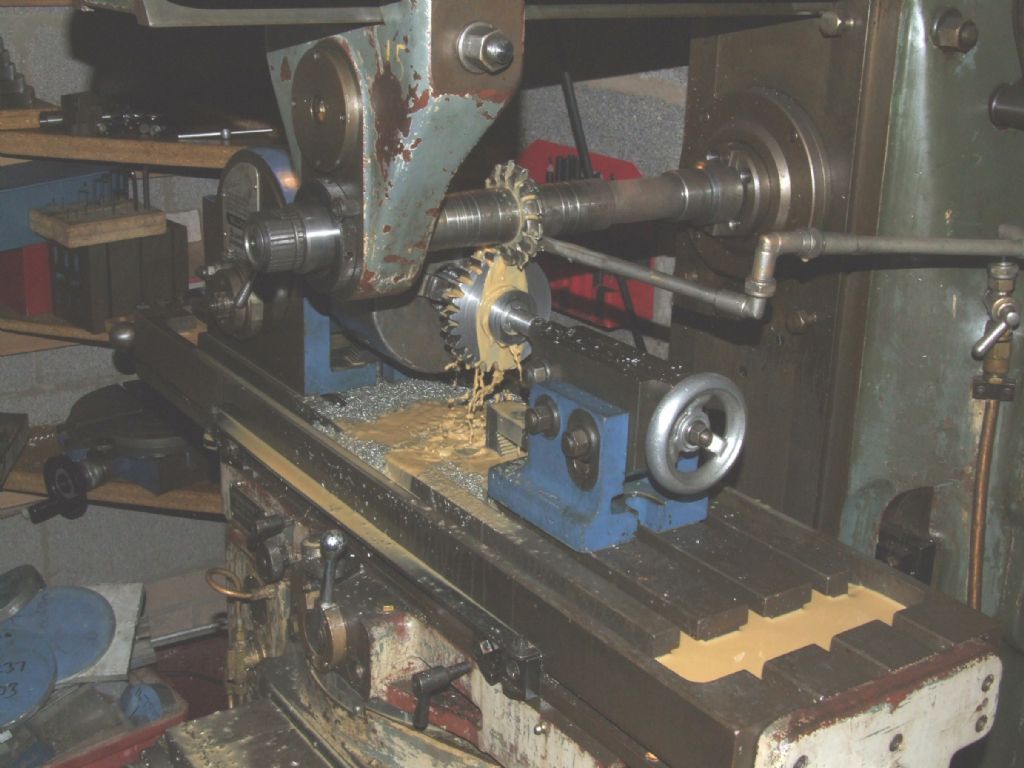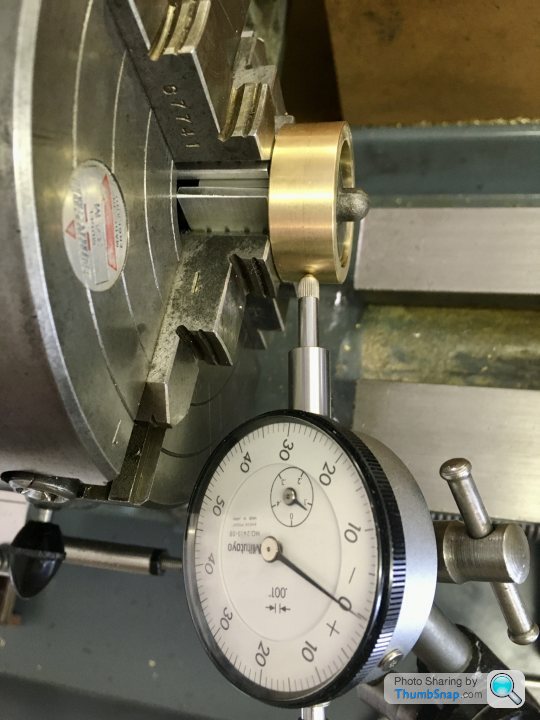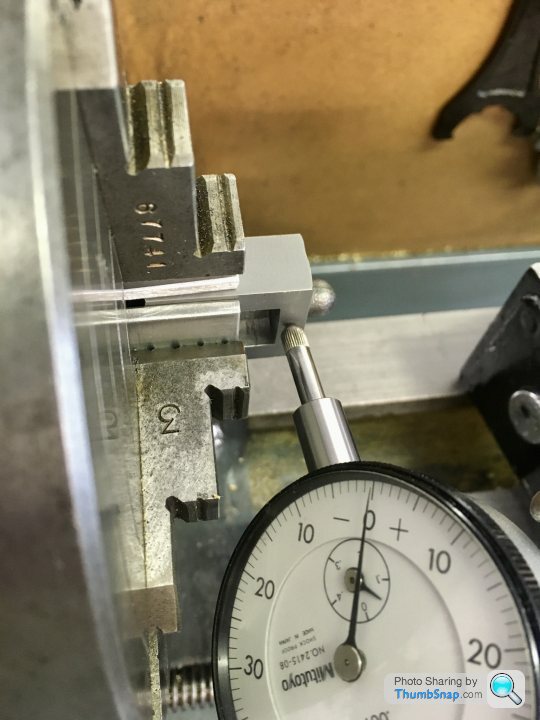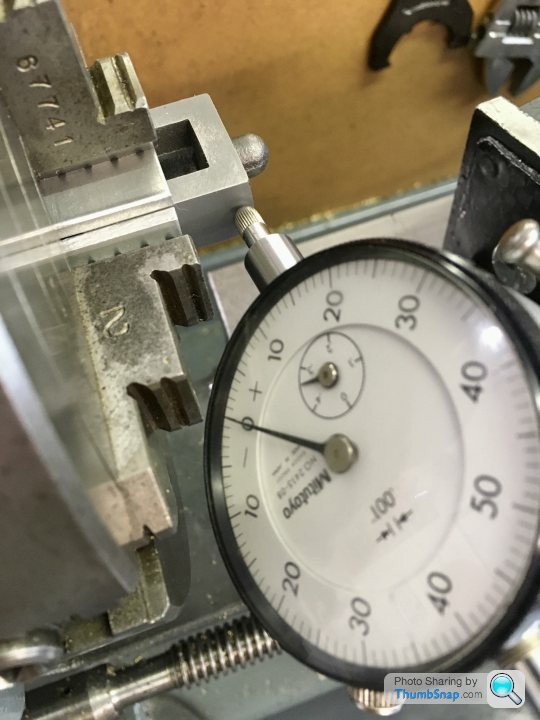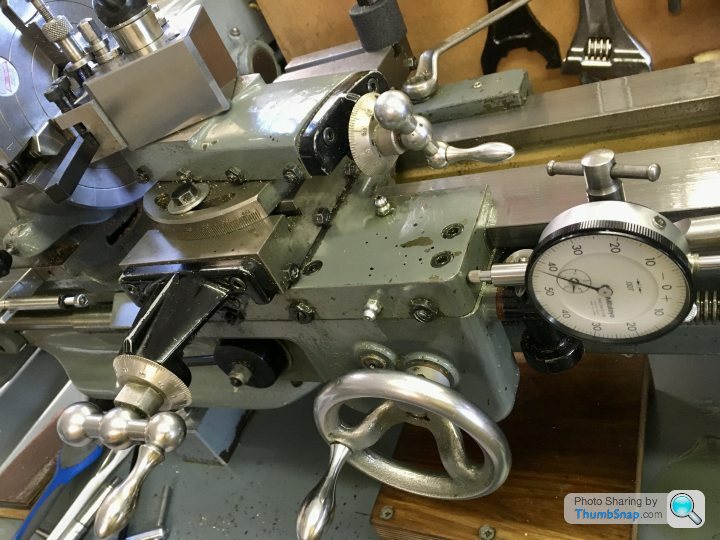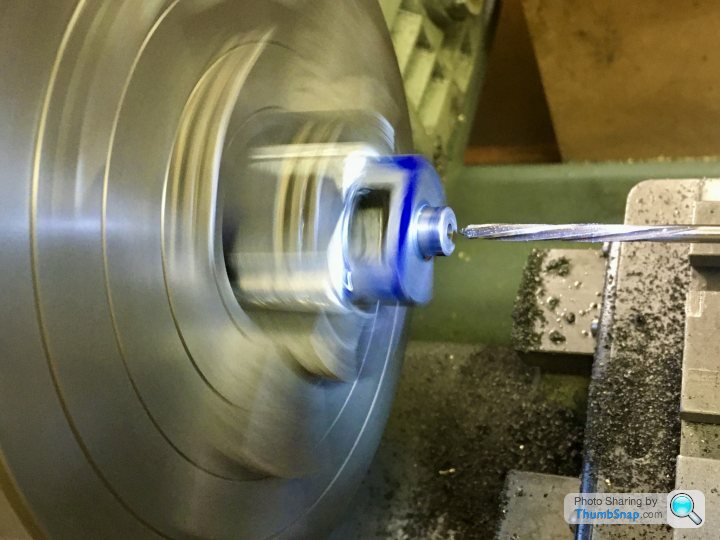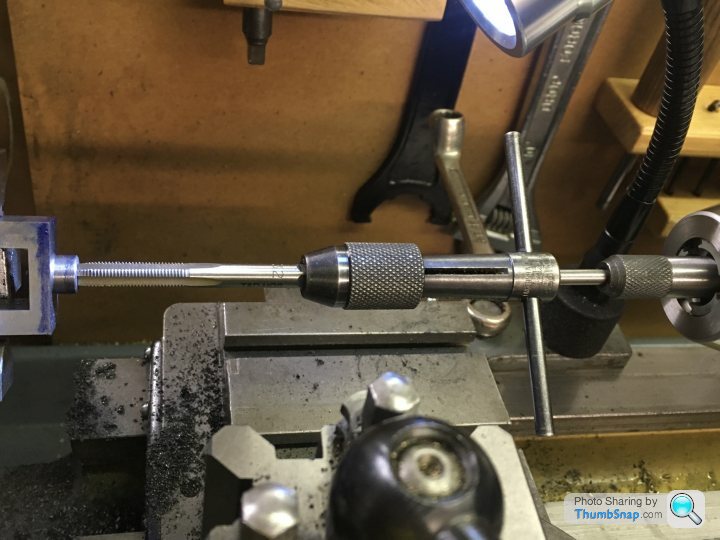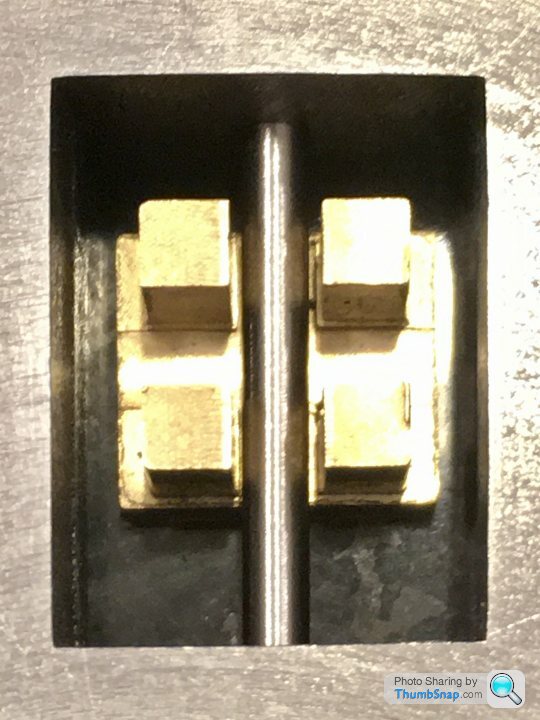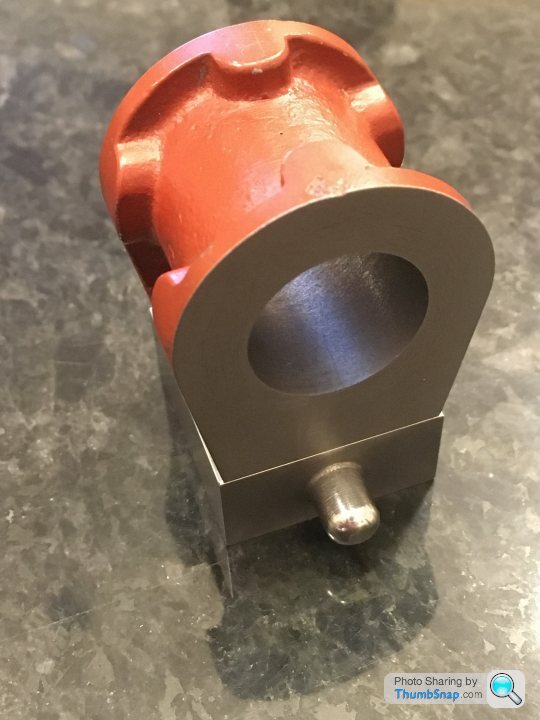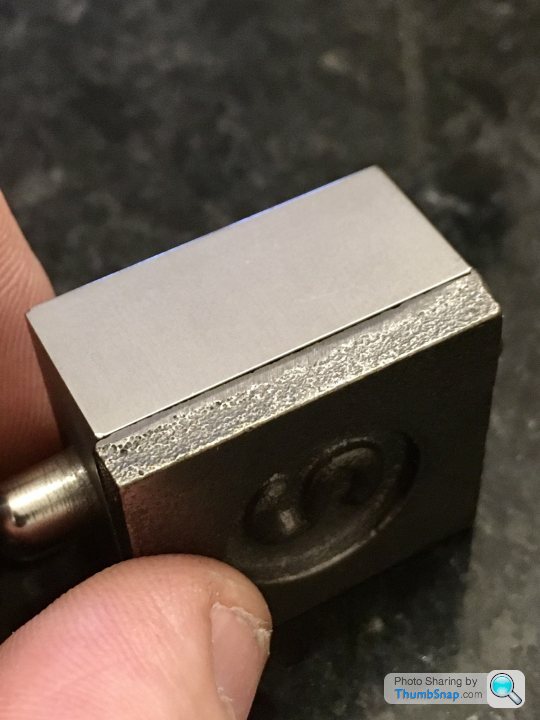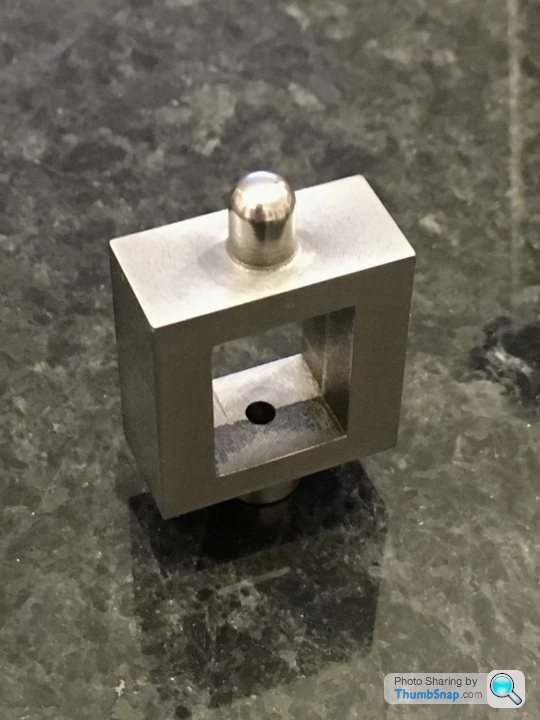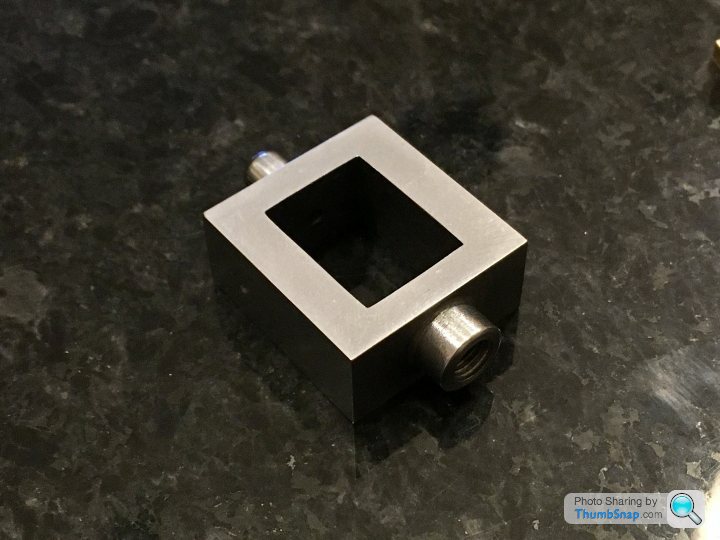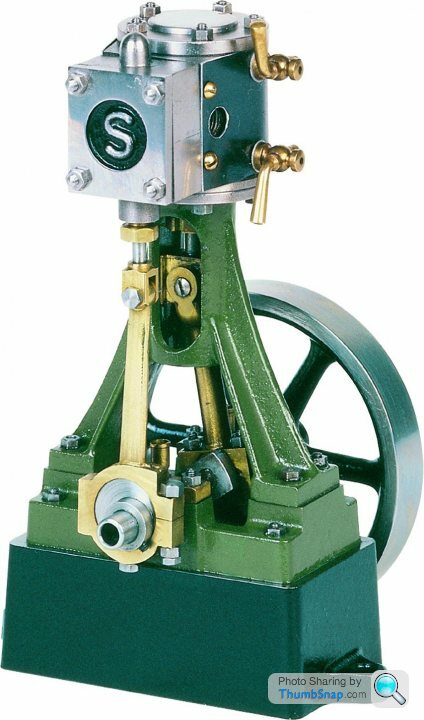Posted by Dr_GMJN on 14/06/2020 22:23:05:
Bore: Drg: 19.05mm, Actual: 19.01mm, d= -0.04mm (-0,002" )
leaves a little for final hone/lap so will be fine, Expect your callipers are reading slightly under anyway
Bore Axis to Valve Face – Drg: 19.84mm, Actual: 19.565mm, d= -0.28mm (-0.011" )
Not too critical can be compensated for by altering eccentric so it sits closer to bore axis by skimming a bit off if things bind on final assembly
Average Cylinder Depth – Drg: 28.575mm, Actual: 28.395, d= -0.18mm (-0.007" )
Not critical, you could make spigot on top cover shorter bt same amount to compnsate but don't sweat over it
Max. Cylinder Depth Error (front/back): 0.17mm (0.007" )
Would be nice to know where that crept in, possibly piston rod face not right back against 4-jaw face when machines, chuck jaws on the casting could have moved it slightly when tightened as would more than likely have contacted one flange before the other. Again should not affect running as you made sure bore and piston rod end where done at the same setting
Valve Port Face Width – Drg: 25.4mm, Actual: 25.4mm
Can't complain about that
Questions:
1) All things considered, are these figures good/bad/indifferent (bearing in mind there are no tolerances on the drawings)?
See comments above
2) Do I need to correct anything?
Ditto
3) I tried to machine to my marked-out lines on the casting, because I had no flat datums to touch on to, to use handwheels/DROs. What's the best procedure for this? I can only think to machine a datum, remove form the machine and measure, then re-fit to the machine and cut to depth using the read-outs (at least for parts that I can get access to measure).
A line will always be a few thou thick and hard to split down the middle. Zeroing DRO after a cut and then taking out to measure what still needs to come off is OK, I do that. If your is resting on a surfac eyou could touch off on that and zero DRO then you know how far beyond that your finish cut needs to be. For cylinder length you could have put carrage against your new stop and touched the tool onto the 4-jaw's face, and then would back the topslide 1 11//8, noted reading and then faced until you got to that reading.
4) Any comments on the methods I used, and how to avoid errors in future are, of course, welcome.
Next job: steam ports. Thanks!
Don't forget to poke some fuse wire down them to remove any remaining core sand
Edited By Dr_GMJN on 14/06/2020 22:51:16
Dr_GMJN.



